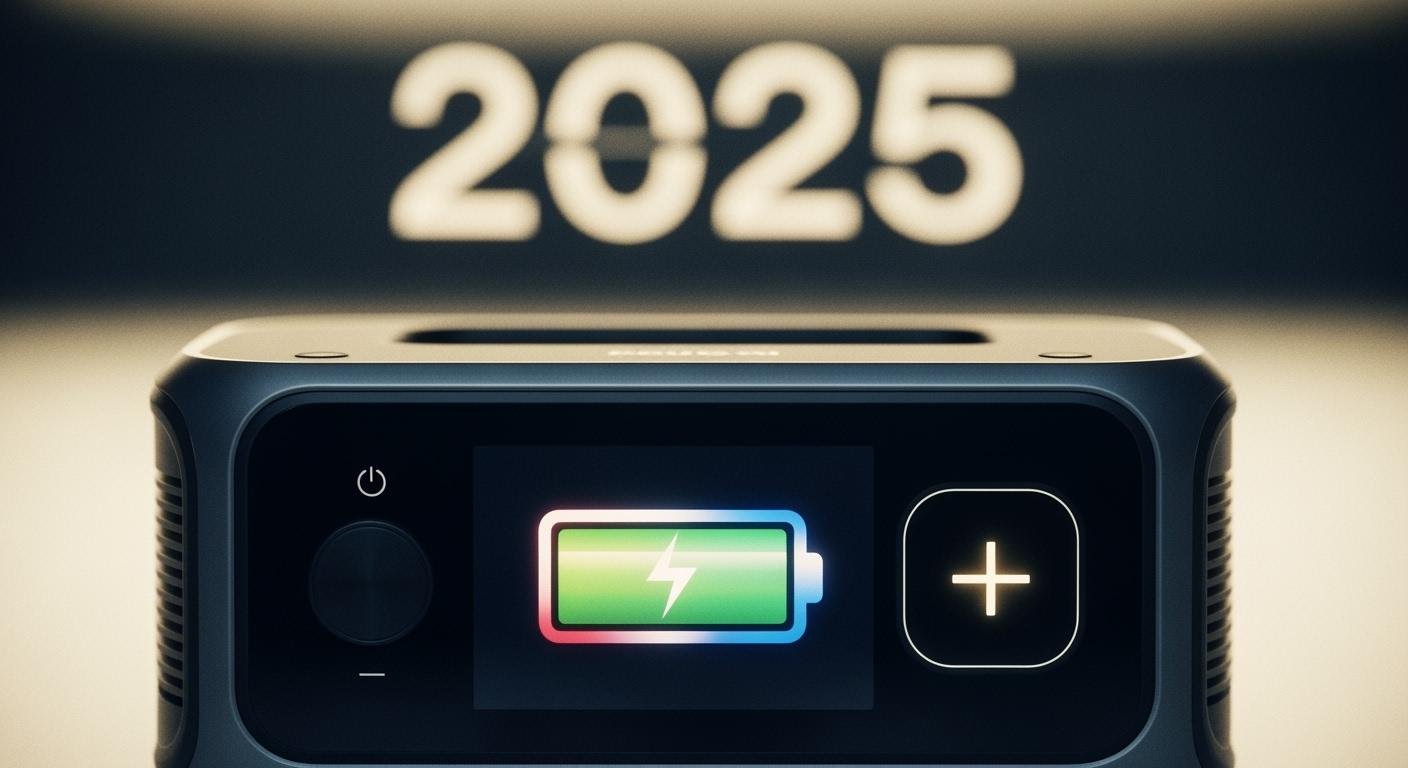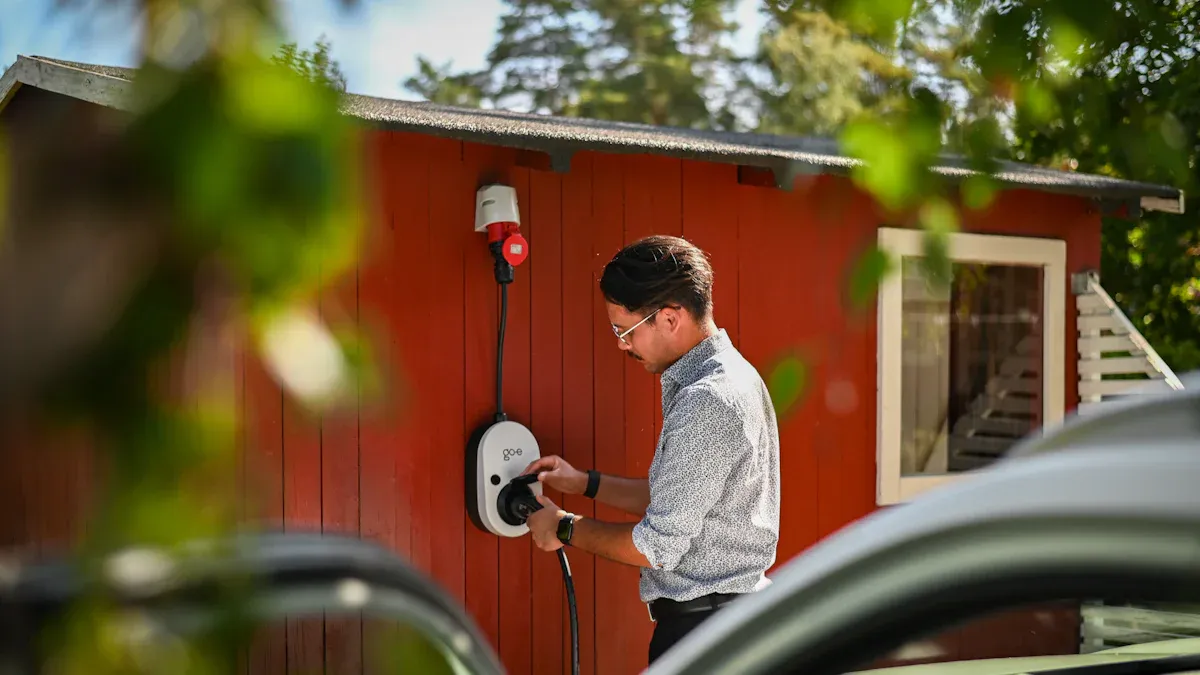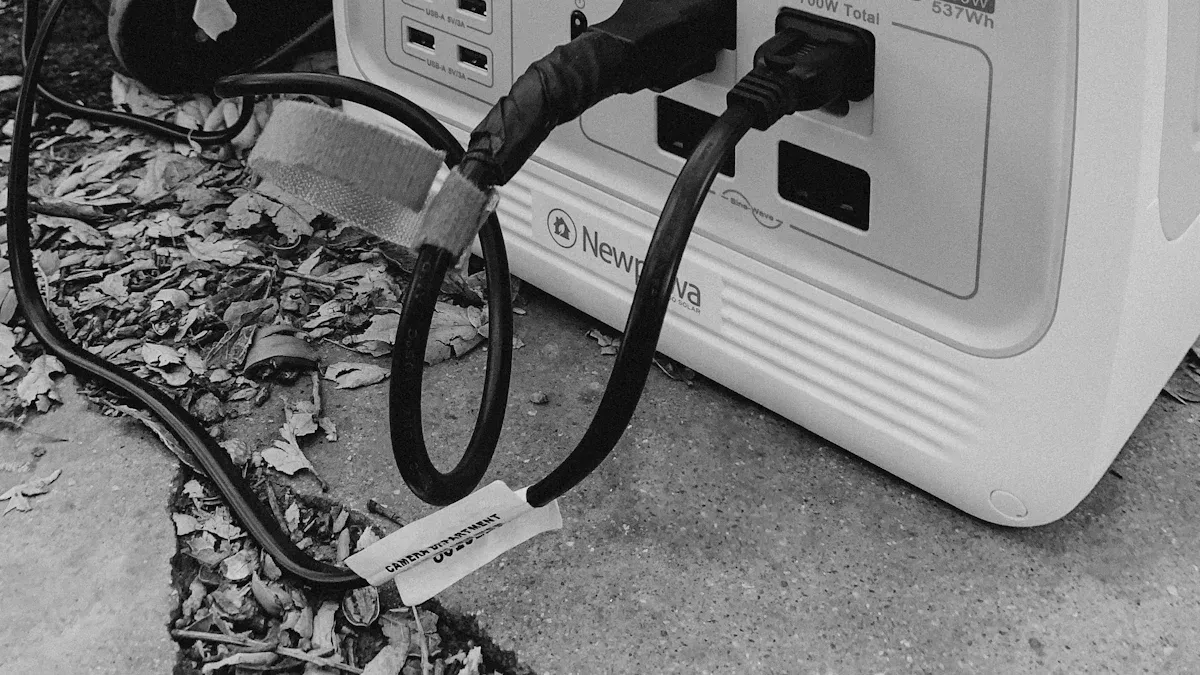
The market for portable power stations is expanding rapidly. Many people are discovering the value of having a reliable portable power station.
| Metric | 2024 | 2025 |
|---|---|---|
| Global Market Value (USD Million) | 603.06 | 661.57 |
You can improve battery life for your device with a few key habits. Start with these three actions for immediate results:
- Stay in the Zone: Keep the battery charge between 20% and 80%.
- Go Direct: Use the DC ports to charge smaller gadgets like phones.
- Store Smart: Put your portable power station away with a 40-60% charge.
Smart Charging to Improve Battery Life

Your daily habits have a huge impact on your portable power station. Smart charging practices are the easiest way to protect your investment and improve battery life. You can get more power over the long term by changing how you charge your device.
Use the 20-80 Charging Rule
Think of your battery like an athlete. Pushing it to 100% or letting it drop to 0% is like a full-out sprint. It causes a lot of stress. A better approach is to keep your portable power station charged between 20% and 80%. This simple habit minimizes stress on the lithium-ion battery cells.
When you charge a battery, lithium ions move into the anode material. Pushing the charge to 100% forces too many ions into a tight space. This chemical process creates physical stress that can cause tiny cracks inside the battery, reducing its capacity over time. Staying in the 20-80% zone offers several key benefits for your portable power station.
- Reduced Heat Generation: Charging to full capacity creates extra heat. Stopping at 80% keeps the battery cooler and healthier.
- Less Chemical Stress: You avoid the extreme states that strain the battery’s internal components. This leads to slower capacity loss.
- Decreased Wear and Tear: This rule reduces overall wear on the battery, which is crucial for battery longevity.
- Improved Efficiency: Batteries charge more efficiently in the mid-range, making the most of every watt.
Use Manufacturer-Approved Chargers
You should always use the charger that came with your portable power station. If you need a replacement, buy one directly from the manufacturer or a certified third-party seller. These chargers are designed to deliver the correct voltage and current for your specific device.
Using cheap, non-certified chargers with high-capacity portable power stations is risky. These chargers often lack proper safety features and can cause serious problems.
Warning: Uncertified chargers can provide inconsistent voltage. This harms your battery and can shorten its overall lifespan with repeated use. They also pose a fire risk and may even void your device’s warranty.
Manufacturer-approved chargers use smart technology to protect your battery. They often include features like:
- Constant Current/Voltage Modes: The charger delivers a steady current and then switches to a constant voltage to prevent overcharging.
- Built-in Protections: Safeguards protect your portable power station from short circuits, over-voltage, and power surges.
- Soft Start and Stop: The power ramps up and down gradually. This prevents sudden current rushes that can damage the battery.
Avoid Pass-Through Charging
Pass-through charging lets you power other devices from your portable power station while it is also plugged into the wall. It seems convenient, but this process generates significant excess heat. Heat is the number one enemy of a healthy battery.
Sustained high temperatures speed up the chemical reactions inside a battery. This causes the protective Solid Electrolyte Interphase (SEI) layer to break down. A damaged SEI layer makes it harder for the battery to store energy and deliver power. In a worst-case scenario, this process creates a cycle of more resistance, more heat, and faster degradation. These poor charging practices can permanently shorten the lifespan of your device. To improve battery life, unplug your devices before you start recharging your power station.
The temperature of your battery has a direct effect on its health.
| Temperature Range | Long-Term Impact on Lifespan |
|---|---|
| 20°C to 25°C (68°F to 77°F) | Ideal range with the slowest degradation |
| 25°C to 45°C (77°F to 113°F) | Accelerated chemical degradation |
| Above 45°C (113°F) | Significant, rapid degradation and safety risks |
Following these smart charging practices ensures your portable power station remains a reliable power source for years to come.
Optimize Usage for Maximum Runtime

Smart charging protects your battery’s health. Smart usage habits give you the most power from every single charge. You can extend your runtime by paying attention to what you plug in and how you use your portable power station.
Manage Your Device Load
Your portable power station has a limited amount of energy. High-power devices will drain it much faster than low-power ones. Understanding your device load helps you manage your power budget effectively. Some appliances, like heaters or air conditioners, are very power-hungry.
You can see the power needs of common devices below.
| Appliance | Power Consumption (Watts) |
|---|---|
| LED Lighting | 3 – 12 |
| Phone Chargers | 5 – 15 |
| Laptop Charging | 45 – 65 |
| LED TV (32-43 inch) | 50 – 100 |
| Refrigerator | 325 – 600 |
| Microwave | 700 – 1,500 |
| Electric Heater | 1,500 – 2,200 |
To get the most out of your portable power station, you should choose energy-efficient devices. For example, you can switch from old incandescent light bulbs to modern LED lights. Incandescent bulbs are very inefficient. They waste about 90% of their energy as heat. LEDs turn about 90% of their energy into light, making them far more efficient.
- An old 60-watt incandescent bulb produces about 800 lumens of light.
- An LED bulb produces the same 800 lumens but uses only 8–12 watts.
This simple switch means you can power five to seven LED bulbs for the same energy cost as one incandescent bulb. You can calculate your total power needs to better plan your usage.
- Find the wattage of each device you plan to use. You can find this on the device’s label or in its manual.
- Calculate watt-hours (Wh) for each device. Multiply the device’s watts by the hours you will use it. A 50W fan running for 10 hours uses 500Wh (50W x 10h).
- Add everything up. Sum the watt-hours for all devices to find your total daily energy requirement. This helps you know if your portable power station can handle the load.
Prioritize DC Output Over AC
Your portable power station stores energy in its battery as Direct Current (DC). Many of your large home appliances, like microwaves and refrigerators, use Alternating Current (AC). Your power station has a component called an inverter that converts DC power to AC power.
Pro Tip 💡: This conversion process is not 100% efficient. Modern inverters are very good, but they still lose about 5% of the energy as heat during the conversion. This means for every 100 watts you pull from the AC outlet, you are actually using about 105 watts from the battery.
Many of your smaller electronics, like smartphones, tablets, and drones, run on DC power. When you plug their chargers into the AC wall outlet on your power station, you are taking DC power from the battery, converting it to AC at the inverter, and then the device’s power brick converts it back to DC. This is inefficient.
To avoid this waste, use the DC outputs on your portable power station whenever possible. Charging your phone through a USB port (which is DC) is more efficient than using its wall charger in an AC outlet. This small change saves energy and gives you more runtime for your other devices.
Power Down Your Portable Power Station
When you are finished using your portable power station, you should turn it off completely. Leaving it in a standby mode causes a slow, unnecessary drain on the battery. This is sometimes called “phantom” or “vampire” power drain.
Even when no devices are plugged in, the unit’s screen, internal sensors, and the AC inverter can draw a small amount of power. While many modern portable power stations have advanced battery management systems, leaving them on still puts a tiny, continuous load on the battery. This generates a small amount of heat and contributes to long-term wear.
Some high-quality models can be left plugged in because they have trickle charging support that prevents overcharging. However, the best practice to improve battery life is simple. If you are not actively using it, power it down. This ensures that every drop of stored energy is saved for when you actually need it, keeping your portable power station ready for action.
Long-Term Storage for Portable Power Stations
Proper storage is crucial when you are not using your portable power station for an extended period. Following the right steps protects your battery’s health and ensures it is ready for your next adventure.
Store at the Ideal Charge Level
You should not store your portable power station fully charged or completely empty. The ideal charge level for long-term storage of lithium-ion batteries is between 40% and 60%. Keeping the battery in this range minimizes stress on its internal components. Storing it at 100% can lead to a permanent loss of capacity. Storing it near 0% risks damage from over-discharging.
Note for Older Models: This advice is for modern portable power stations with lithium-ion batteries. If you have an older model with a lead-acid battery, the rule is different. You should store it at a full 100% charge. Leaving a lead-acid battery partially discharged causes sulfation, which damages the battery plates and reduces its lifespan.
Maintain a Cool, Dry Environment
Temperature and humidity greatly affect your battery’s health. You should store your portable power station in a cool, dry place away from direct sunlight. The recommended storage temperature is between 0°C and 40°C (32°F to 104°F). High temperatures from direct sunlight accelerate battery degradation.
High humidity is also a major threat. Moisture in the air can cause serious problems for your portable power station.
- Corrosion: Water vapor can corrode metal parts like battery terminals and circuit boards.
- Short Circuits: Humidity increases the risk of electrical shorts, which can cause malfunctions or permanent damage.
- Reduced Capacity: Moisture can alter the battery’s electrolyte, reducing its ability to hold a charge.
Calibrate the Battery Periodically
The battery management system (BMS) is the brain of your portable power station. It monitors the battery’s health and displays the remaining charge. Over time, the battery management system can become inaccurate. This happens because it estimates charge based on usage patterns that may not capture all real-world conditions.
To fix this, you should calibrate the battery every 3 to 6 months. Calibration resets the battery management system, ensuring the charge level you see is accurate. This simple maintenance task improves the long-term lifespan of your device.
To calibrate your battery:
- Charge your portable power station to 100%.
- Use it until the battery is completely drained to 0%.
- Immediately recharge it back to 100%.
This full cycle gives the battery management system a fresh, accurate reading of its full and empty states. This helps prevent unexpected shutdowns and keeps your device reliable.
Protecting your portable power station is simple. You can avoid common mistakes like overcharging or improper storage by adopting a few key habits. These practices are the best way to protect your investment in portable power stations.
- Charge Smart: Keep your battery between 20% and 80%.
- Use DC Power: Prioritize DC outputs for small electronics.
- Store Correctly: Put your portable power station away with a 40-60% charge.
Following these tips will improve battery life. You will ensure your portable power station is reliable for every adventure to come.
FAQ
Can I leave my power station plugged in all the time?
You should avoid leaving it plugged in constantly. Most modern units have overcharge protection. However, the best practice is to unplug your device after it reaches an 80% charge. This simple step helps protect the battery’s long-term health and improves its overall lifespan.
How often should I use my power station?
You should use your power station at least once every 3 to 6 months. Batteries lose a small amount of charge over time, even in storage. Using it periodically and performing a calibration cycle keeps the battery management system accurate and the battery cells healthy.
What is the biggest mistake I can make with my power station?
The biggest mistake is leaving your power station in a hot car or in direct sunlight. High temperatures are the number one enemy of battery health. Heat rapidly speeds up chemical degradation. This process permanently reduces your battery’s capacity and shortens its lifespan.
Does it matter which port I use to charge my phone?
Yes, it matters. You should always use the USB (DC) ports to charge your phone and other small gadgets. This method is more energy-efficient than using the wall-style (AC) outlets.
Remember 💡: Using DC ports avoids energy loss from the conversion process. This gives you more available power for your other devices.

